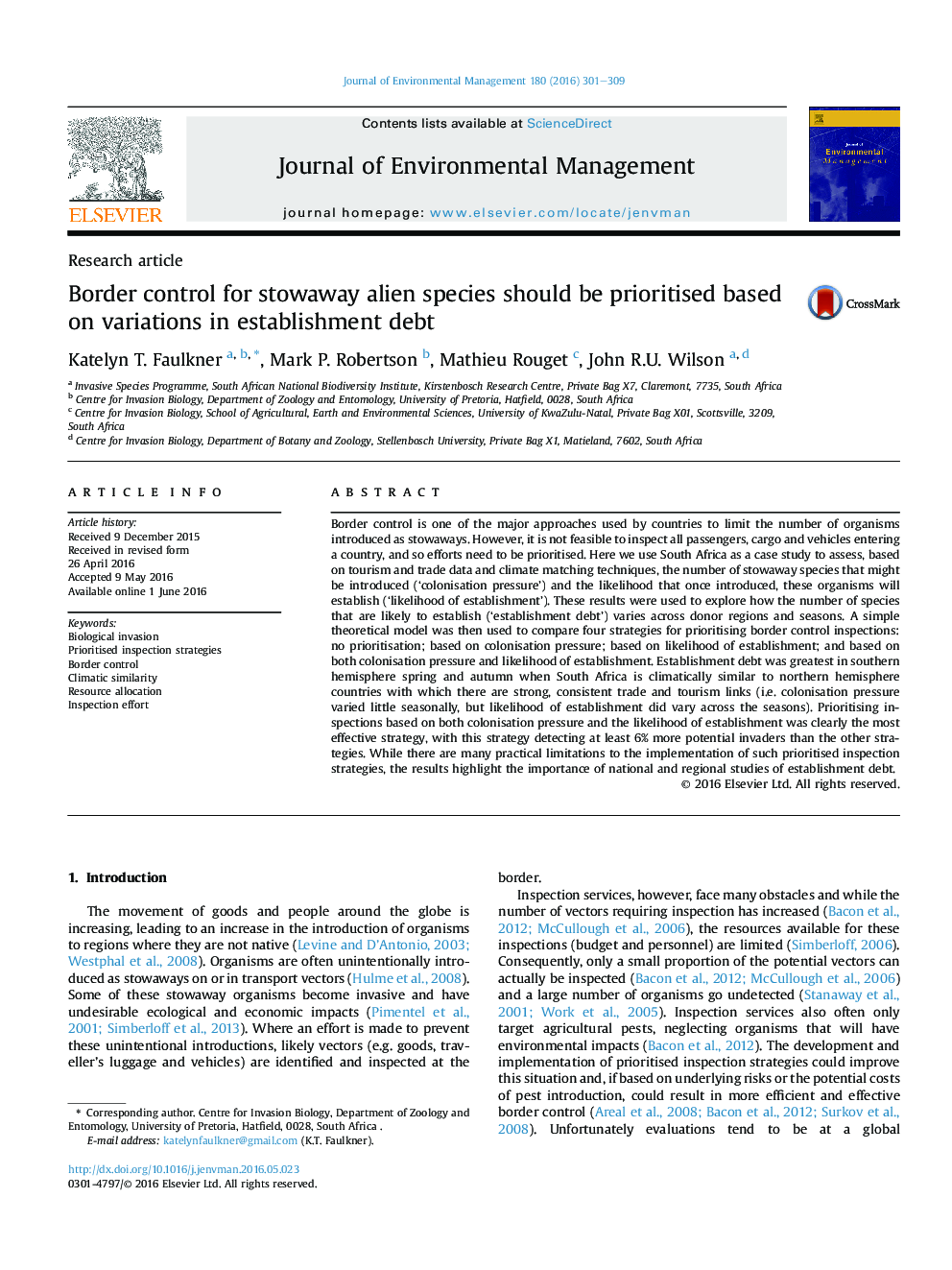| Article ID | Journal | Published Year | Pages | File Type |
|---|---|---|---|---|
| 7480144 | Journal of Environmental Management | 2016 | 9 Pages |
Abstract
Border control is one of the major approaches used by countries to limit the number of organisms introduced as stowaways. However, it is not feasible to inspect all passengers, cargo and vehicles entering a country, and so efforts need to be prioritised. Here we use South Africa as a case study to assess, based on tourism and trade data and climate matching techniques, the number of stowaway species that might be introduced ('colonisation pressure') and the likelihood that once introduced, these organisms will establish ('likelihood of establishment'). These results were used to explore how the number of species that are likely to establish ('establishment debt') varies across donor regions and seasons. A simple theoretical model was then used to compare four strategies for prioritising border control inspections: no prioritisation; based on colonisation pressure; based on likelihood of establishment; and based on both colonisation pressure and likelihood of establishment. Establishment debt was greatest in southern hemisphere spring and autumn when South Africa is climatically similar to northern hemisphere countries with which there are strong, consistent trade and tourism links (i.e. colonisation pressure varied little seasonally, but likelihood of establishment did vary across the seasons). Prioritising inspections based on both colonisation pressure and the likelihood of establishment was clearly the most effective strategy, with this strategy detecting at least 6% more potential invaders than the other strategies. While there are many practical limitations to the implementation of such prioritised inspection strategies, the results highlight the importance of national and regional studies of establishment debt.
Related Topics
Physical Sciences and Engineering
Energy
Renewable Energy, Sustainability and the Environment
Authors
Katelyn T. Faulkner, Mark P. Robertson, Mathieu Rouget, John R.U. Wilson,
